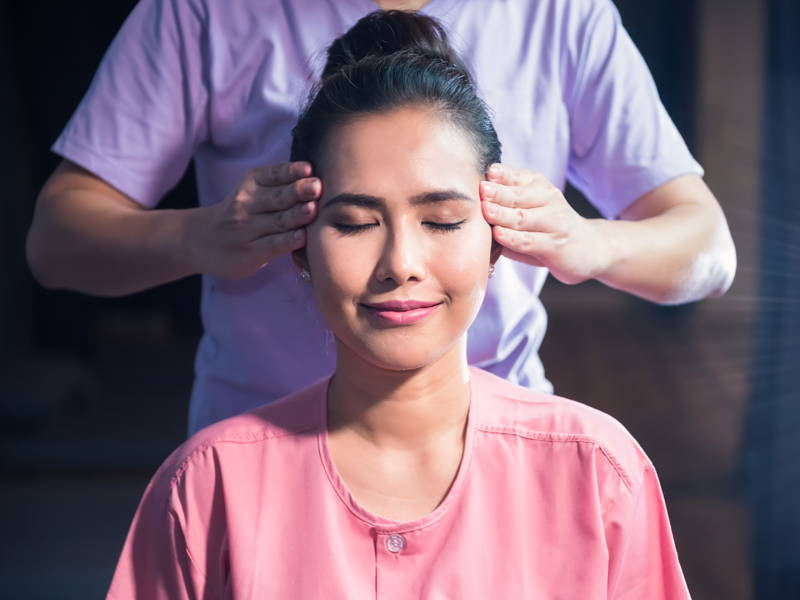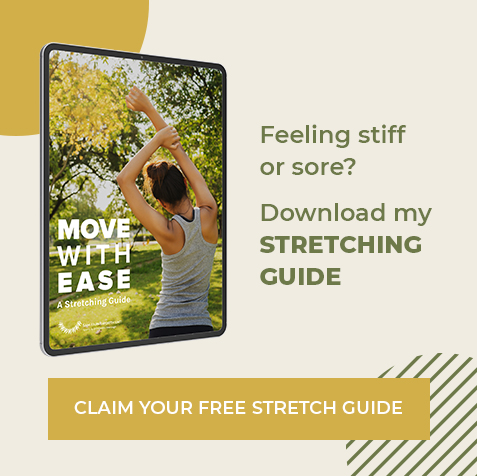Recently, more clients are arriving with reports of migraines. Myofascial techniques, which are the core of my treatment technique, have a demonstrated benefit to migraine sufferers. Steady, targeted work particularly around the neck and down the back can provide relief. However, as I sit down to write this blog, I recognize that I personally have not experienced migraines. So in an effort to better understand them myself and to validate my treatment results, I did a little research. What follows is a summary.
The American Migraine Foundation defines chronic migraine as someone who has more than 15 headache days per month. They go on to state that chronic migraine affects 3–5% of the U.S. population.
The International Headache Society goes further, indicating that migraine features include:
- Pain is moderate or severe and often intense.
- Pain may be on one side or the head or both.
- The head pain causes a throbbing, pounding or pulsating sensation.
- The pain gets worse with physical activity or movement.
- The patient must have nausea, vomiting, and/or light and sound sensitivity along with the head pain.
The International Headache Society reports that chronic migraine has some common but treatable risk factors. Some examples of risk factors include:
- Depression, Anxiety, Other pain disorders, Obesity, Asthma, Snoring
- Stressful life events, Head/neck injury, Caffeine, Acute medication overuse, Persistent, frequent nausea.

How Can Massage Help with Chronic Migraine?
From a blog entitled Migraine and Massage: What You Should Know, the Migraine Relief Center list the following reasons why massage may help migraines:
- Muscle Spasms or Tension: Massage in the neck and shoulder regions can help to relax taught bands of tissue, loosening the sub-occipitals (those muscles attached to the base of the skull), which cause pain through tension that travels up through the back of the head and into the eye areas.
- Hormone Regulation: Hormonal chemical changes often trigger migraines. Cortisol, commonly known as the stress hormone, can be controlled by massage therapy, which also increases endorphin production as well as stimulating the parasympathetic nervous system.
- Decrease Trigger Point Pain: Neuromuscular therapy, also known as trigger point therapy, targets hyper-irritable, tender tissue areas that can refer pain to other parts of the body.
- Improved Circulation: Massage has been shown to increase blood flow, which in turn improves oxygen levels and can help reduce pain.
The Migraine Relief Center also provides more detail in a blog about Alternative Treatments for Migraine: Massage for Migraine Treatment. Massage can release endorphins, increase serotonin levels, reduce sleep disturbances, and relieve stress. All of this can result in fewer migraines and symptom relief.
The licensed massage therapists at The Migraine Relief Center integrate a variety of massage techniques in treatment plans, including:
- Deep tissue. This type of massage therapy uses firm pressure to reach the deeper skin tissues and underlying layers of muscle.
- Sports massage therapy. The therapist can tailor the massage according to the athlete’s sport.
Signing up for regular massages can bring lasting migraine relief. Paired with relaxation techniques and stress management, massages can eliminate physical and emotional tension. Our center will address your specific needs when prescribing massage for migraines.
Research on the Benefits of Massage for Migraines
While the body of research on massage is limited in some areas, benefits for migraine sufferers have been demonstrated in at least two studies.
A study published in the International Journal of Neuroscience in 1998 by Maria Hernandez-reif et al looked at how migraine sufferers were affected by receiving two 30-minute massages per week for five consecutive weeks. A group of 26 individuals with migraine headaches were randomly assigned to a wait-list control group or to a massage therapy group. The massage therapy subjects reported fewer distress symptoms, less pain, more headache free days, fewer sleep disturbances and they showed an increase in serotonin levels.
(Serotonin is the key hormone that stabilizes our mood, feelings of well-being, and happiness. This hormone impacts your entire body. It enables brain cells and other nervous system cells to communicate with each other. Serotonin also helps with sleeping, eating, and digestion.)
A second study from 2006 published in the Annals of Behavioral Medicine had a study group of 47 migraine sufferers. The members of the study group were randomly assigned to massage or control groups. Massage participants attended weekly massage sessions during Weeks 5 to 10. State anxiety, heart rates, and salivary cortisol were assessed before and after the sessions. Perceived stress and coping efficacy were assessed at Weeks 4, 10, and 13. Massage participants exhibited reduced migraine frequency and improved sleep quality during the intervention weeks and the 3 follow-up weeks. Trends for beneficial effects of massage therapy on perceived stress and coping efficacy were also observed.
I hope you will consider both the attributes and potential benefits of massage. If I can help in any way, please contact me at samfarnsworth12@gmail.com.
References
American Migraine Foundation https://americanmigrainefoundation.org/
International Headache Society https://ihs-headache.org/en/
Migraine Relief Center – https://blog.themigrainereliefcenter.com/migraines-and-massage-what-you-should-know
Migraine Research Foundation – https://migraineresearchfoundation.org/about-migraine/migraine-facts/
Maria Hernandez-reif et al, Migraine Headaches are Reduced by Massage Therapy, International Journal of Neuroscience, 1998
Hormone Health Network (www.hormone.org) by Endocrine Society
Lawler, Sheleigh P., and Linda D. Cameron. “A randomized, controlled trial of massage therapy as a treatment for migraine.” Annals of Behavioral Medicine 32.1 (2006): 50-59.

